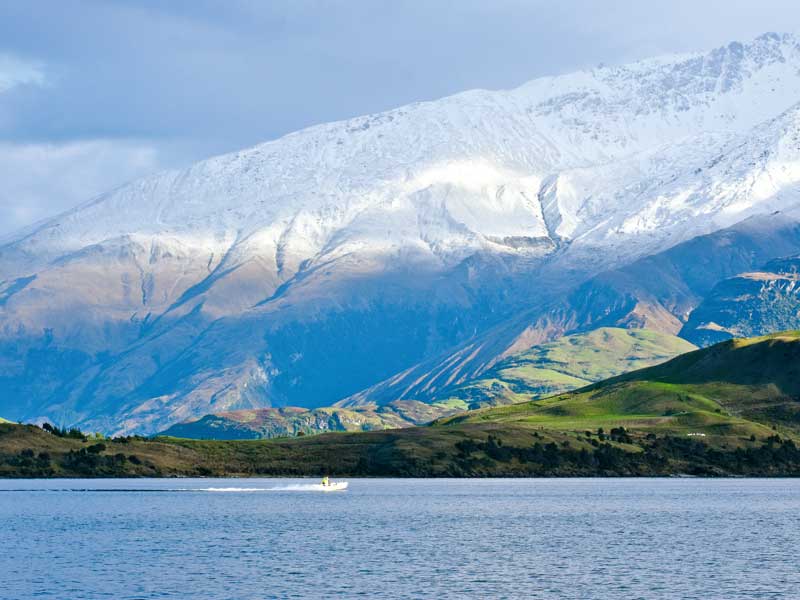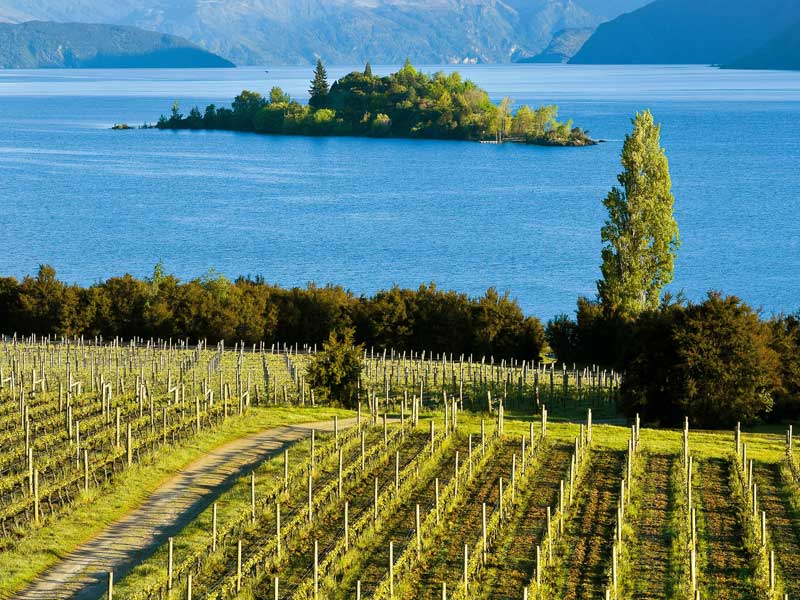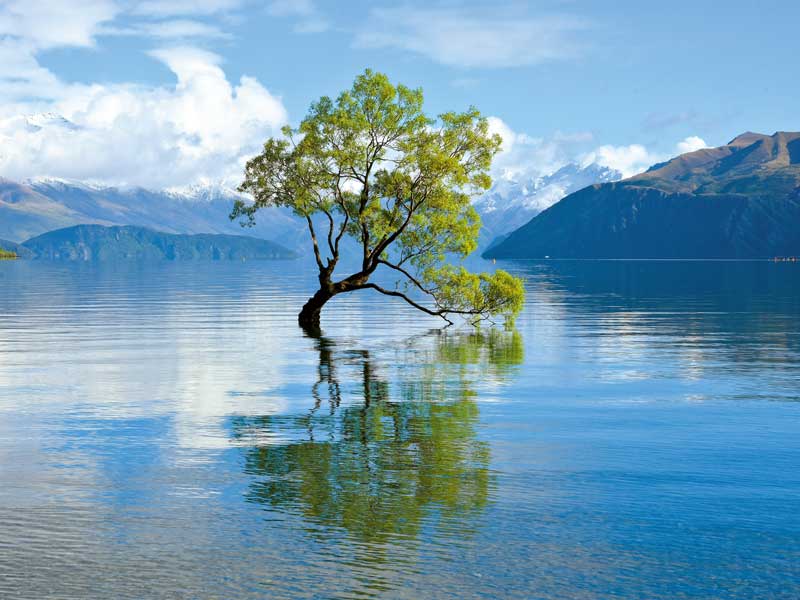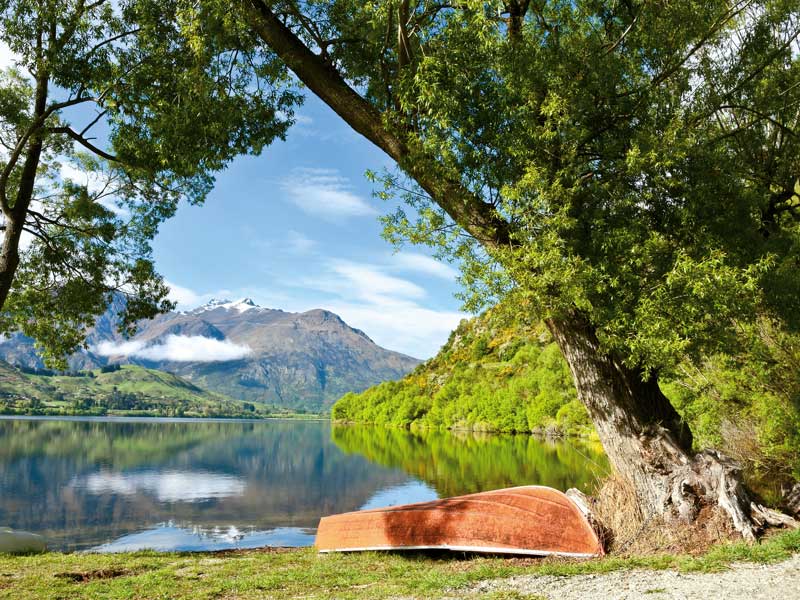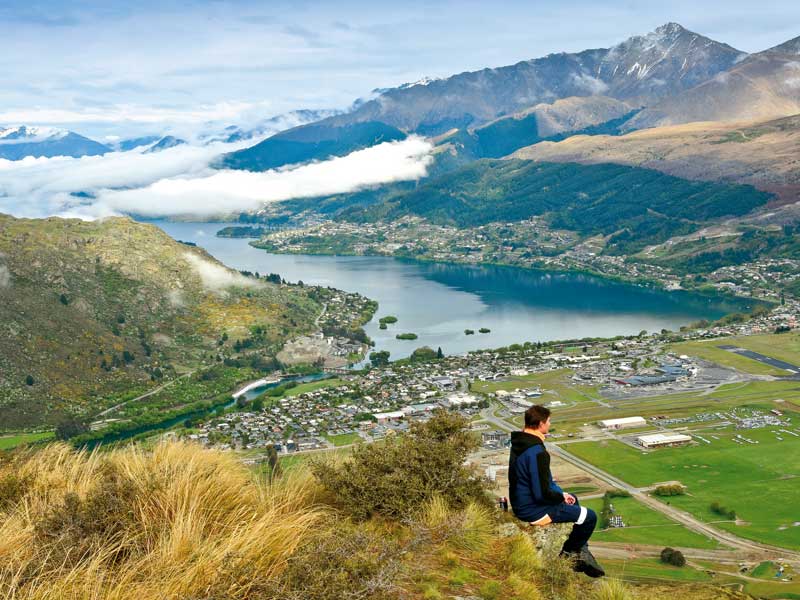Mountains reach the sky and their sawtooth peaks gleam white. The blue lakes below shimmer, and at night, the stars are so close and crisp that one can almost reach and touch them. Lakes Wanaka, Wakatipu, Hawea, and Hayes are each visual and recreational jewels.
Lake Wakatipu
Queenstown, with its numerous ice-cream parlours, streets of restaurants and bars, souvenir shops, and unbelievably, traffic jams is well worth passing straight through. Leave it to the tourists, and make your way to Lake Wakatipu. It is big and beautiful, and it’s easy to find serene places that you will often have to yourself.
At the top of the Wakatipu Kinloch Camping Ground is lake edge with a clear view down the long glacial valley in which the lake rests. When you are tired of looking at the shadows on the mountains, the sun on water, and the dark smudge of Pig and Pigeon islands, turn around and look up the Dart Valley at the big mountains of Mount Aspiring National Park.
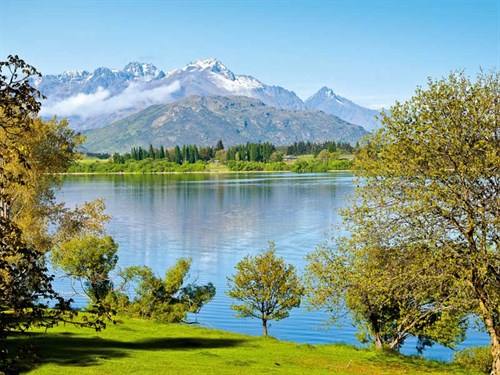
There are numerous walks in the area, including the Routeburn, Caples, and Dart River Tracks. But if you’re not interested in tramping, you can enjoy the mountain rivers leaping over rocks and lichen- and moss-laden beech forest on shorter walks.
Another secret delight near Wakatipu is little Moke Lake, just 12km from Queenstown. It has an exquisite DOC campground, and on still mornings, the reflections of the mountains in the lake are so clear that it’s hard to know which side is up. Merino sheep with curly horns stroll around, those in the know catch trout, and there are pretty walks around the lake for strollers and over the hill to Lake Dispute for those who want to stride out.
Lake Hayes
This is one of the most photographed lakes in New Zealand with the best Nikon moments being in autumn when the leaves turn. The large willow-shrouded reserve at the north end is a delightful place to stay at any time of the year, and despite the fame of the lake, it doesn’t get too crowded, as it’s for self-contained vehicles only. Freedom camping police will happily give spaceships, mini JUCYs, and backpackers’ station wagons an instant fine of $200 if they try to night over.
The eight-kilometre walking and cycling path around the lake is a treat, with the ever-changing lake and mountain vistas, ducklings in season, trout for those into fishing, and sneak peeks over fences into some of New Zealand’s poshest houses.
Amisfield Bistro & Winery is close to the path if you wish to stretch the afternoon with fine Otago wines without the worry of driving.
Lakes Wanaka and Hawea
Lakes Wanaka and Hawea are in great U-shaped gorges gouged out by glaciers. Parallel to each other, the two lakes almost become one with just one kilometre separating them at a narrow stretch of land called The Neck. Hawea is starkly spectacular but Wanaka is my favourite with bays, arms, and islands making it more visually interesting and providing private nooks and crannies for kayaking, walking, and picnicking.
In the south-west of Lake Wanaka, Glendhu Bay Motor Camp is in a prime lakeside position, just 12km but a world away from Wanaka township. There is a cluster of mountains nearby with peaks over 2200 metres and places for motorhomes and campers near the lake edge. When you feel like doing more than wowing at the scenery, there is a terrific trail for bikes and walkers from the campground to Wanaka. It’s 12.5km long, so there is the problem of getting back, however, should you just wish to walk half way, the Rippon Vineyard is a great place for a rest.
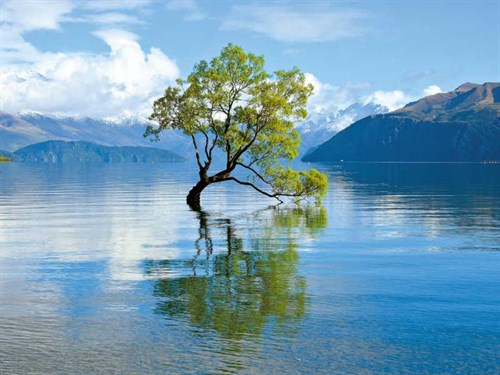
Walk through the grapes up the hill to the cellar door and then rehydrate with the ambrosial delights of a Rippon Riesling. The splendid view over the vines across the lake and Ruby Island to the mountains in the distance gets better as the level in the bottle gets lower.
Another popular Wanaka walk is up Mt Iron. It’s a five-kilometre, steep, loop path. The best time to do this is at sunrise to see the surreal softness of pink mountain peaks, peachy sky, and low morning mist gently dissipating. Then the new day is revealed in all its blue beauty.

